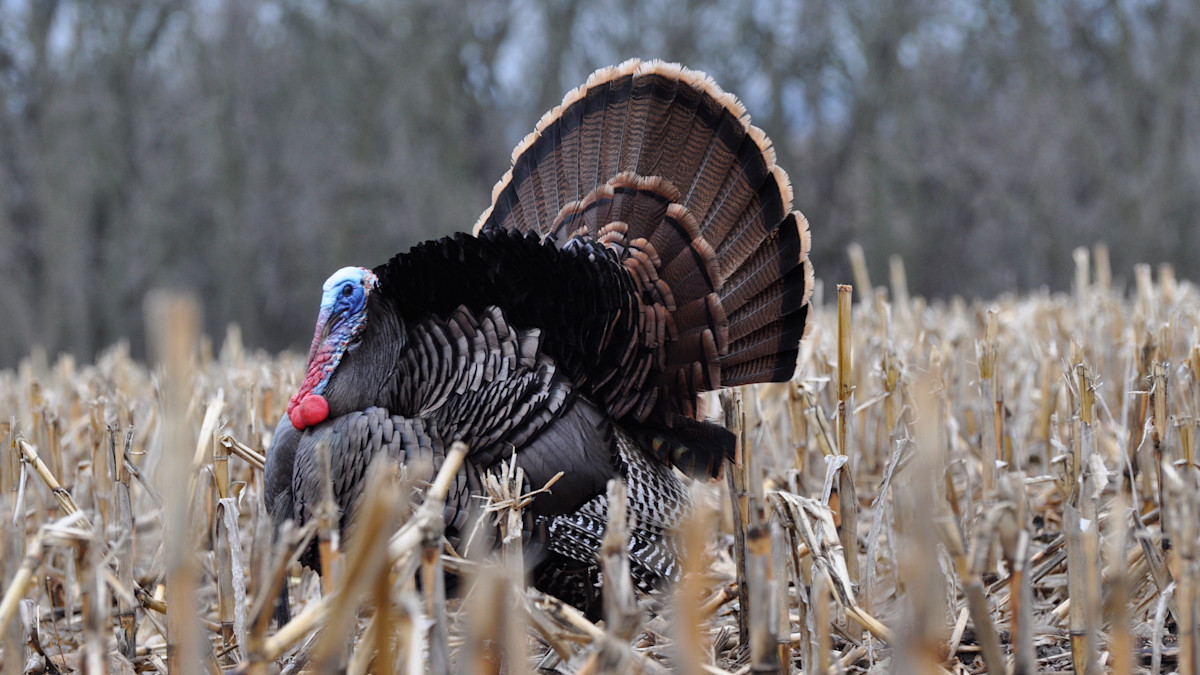
Turkeys sleep in the trees because it’s safer than sleeping on the ground. Now that I’ve written probably the dumbest (and simplest) turkey statement any outdoor writer has ever conjured up, let me redeem myself.
Don’t Approach at Dusk
While those gobblers and hens are all safe from ground predators on their favorite oak limbs, they also have one hell of a vantage point. If you’ve spent any time in a treestand you probably understand this. From their elevated view, they can see where they want to land, what toothy critters might be waiting for them, and of course, humans slipping through the timber or along the field edges.
If you slept in a bit, and entered the woods in the gloaming, you have made a big timing mistake. Those moments when it’s light enough to see, but not light enough for the birds to fly down are when a lot of hunts end before they ever get going.
Even if you have no real plan but to run, gun, and chase gobbles, you should get out there in the dark. (If you can’t make it in the dark, at least wait until the birds are off the roost.) Don’t use a light, go slowly, and get to where you want to be, long before the sun breaches the horizon. Then, pay attention to the responses your calling gets.
He Knows You’re There
This has been said a lot, but it’s worth repeating—give birds some time to commit. If you get an answer, even from a distant longbeard, give him some real time. Impatience saves plenty of birds, and it’s important to understand that you’re on their schedule, not yours.
If they want to strut for some hens for a few hours, they are going to. Somehow, in their tiny bird brains, they seem to remember where they heard hens earlier in the day. And sometimes, they go try to find those hens once their first-choice girlfriends get too uppity.
There is no rule on how long a gobbler will take to commit because they don’t all do the same thing. In my experience, especially on public land birds that have received plenty of pressure, it’s often an hour or two. It’s also often a silent approach. If you get a response and don’t have a compelling reason to go look for other birds, get comfortable.
Figure out a way to give him some time to commit, and start your calling sequences quietly. If he’s close and hears a series of soft yelps, he might let you know he’s coming. If you blow his eardrums out with a box call at full volume, he might not be super keen to close the remaining distance. Check his progress if he goes silent, but don’t jump-scare him like a cheap horror flick.
You Can Hunt All Day Long
Plenty of folks have written about hunting turkeys from first light until closing time, and the truth is, it’s all good. Honestly, most of my birds die around midday, and I think that has something to do with the fact that I don’t care as much about having to hunt at sunrise. If I have some work to finish and can’t hit the woods until 10 am, it doesn’t bother me. The birds are out there all day, and they are callable.
This is hard to grasp for some people, and I get it. The gobble-fest off the roost is fun, and the birds are usually visible early, but they might be more susceptible to your turkey speak at later points throughout the day. Often, this is mid-morning through the lunch shift, and then again as they stage up to head to the roost.
Treat your time in the woods—no matter when you’re there—like it’s going to happen. Because it certainly could. It’s easy to get a bit lazy with setups or with movement when the action isn’t happening like it was as the sun was rising, but that’s a mistake. Your best time to kill a bird is when you’re out there with your A-game in full force, whether it’s 6:30 in the morning or 2:30 in the afternoon.
There is no bad time to hunt, and the times when it seems slowest, are often really good when you’re hunting pressured birds because your competition is likely to leave. That’s a major timing mistake, and one you can capitalize on just by sticking around.
For more turkey hunting advice, give these articles a look: 3 Underrated Turkey Decoy Setups, 3 Calling Mistakes Every Turkey Hunter Makes, and Turkey Hunting: Setups, Calling And Shooting.





